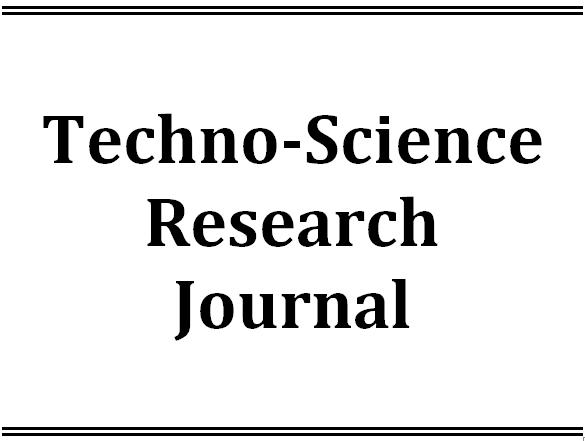Latest Issue
Empowering Education with Online Khmer Handwritten Text Recognition for Teaching and Learning Assistance
Published: August 30,2025Undergraduate Student Dropout Prediction with Class Balancing Techniques
Published: August 30,2025Status of Seawater Quality at Koh Rong Island, Sihanoukville, Cambodia
Published: August 30,2025Low-Complexity Detection of Primary Synchronization Signal for 5G New Radio Terrestrial Cellular System
Published: August 30,2025Word Spotting on Khmer Printed Documents
Published: August 30,2025Tuning Hyperparameters Learning Rate and Gamma in Gym Environment Inverted Pendulum
Published: August 30,2025Examining Passenger Loyalty in Phnom Penh Public Bus System: A Structural Equation Modelling Approach
Published: August 30,2025Prediction on Load model for future load profile of Electric Vehicle charging demand in Phnom Penh
Published: August 30,2025Economic Study on Integrating PV-DG with Grid-Tie: Case Study in Cambodia
Published: August 30,2025Behavioural Study of People toward Plastic Bag Generation and Characteristics of Plastic Waste Composition in Phnom Penh
-
1. Paññāsāstra University of Cambodia
Academic Editor:
Received: January 22,2024 / Revised: / Accepted: January 22,2024 / Available online: June 01,2019
Plastic bags are used widely across nations and became famous for carrying goods and packing products since 1970 and they start to rapidly popularized in the 20thcentury. People live in Phnom Penh City, the capital city of Cambodia, also use large amount of plastic bags due to various reasons such as their convenience, inexpensive, get free of charge, and easy to get. Plastic bags use has rapidly increased as result of changing life styles, population growth, urban development and economic growth per capita. As a result, plastic bag wastes have left in a huge amount. The study was conducted in six out of twelve Khans (district) in Phnom Penh, and aims to understand the behaviour of people toward plastic bag generation and to characterize the composition of plastic wastes. Sample size of one-hundred sixty- six households and ninety-six non-households were selected based on the formula of Cochran, and waste samples size followed the Methodology for the Solid Waste Analysis Tool (SWA-Tool). One Way-ANOVA in SPSS was used to identify the degree of plastic bag consumption associated with socio-economic parameters (income, and education level). The positive significance was found with both socio- economic parameters at p = 0.001 (p<0.05). Family income was grouped into low, middle, upper-middle, and high-income. The findings indicated that the families with less education and/or with higher income produced higher amount of plastic bag wastes. Moreover, plastic waste is in the second largest amount after organic waste, which is accounted 11% in PP. The further analysis of plastics showed the composition across different categories with white and colorful - LDPE plastic bags to be found 34% and 18%, while LDPE-other–17%, PS– 8%, PET–8%, PP–7%, HDPE–5%, PVC–2%, and other plastic resin–1%, respectively.

